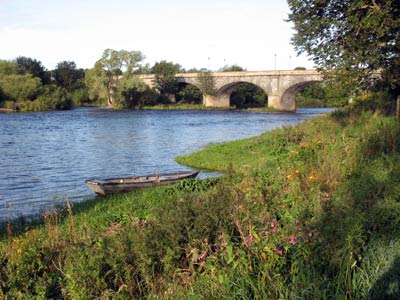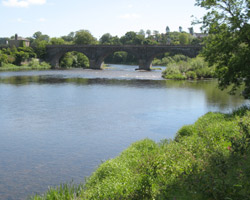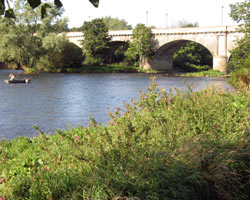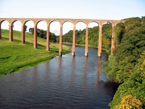
KELSO BRIDGE

"By the end of the C18, Kelso consisted of a spacious market place with four principal streets leading from the corners, and narrow wynds, mostly leading to the river. Light industry is hidden away on the station site, established firms still thrive, and successful small businesses have been established, Kelso remains a peaceful town to live in."
The Buildings Of Scotland, Borders. Kitty Cruft, John Dunbar and Richard Fawcett. 2006.
The old bridge at Kelso lies about half a mile east of where the Teviot joins the Tweed. It is an attractive stone bridge designed in the late 18th century by John Rennie and replacing an older bridge of six arches dating from 1755. It carries the A699 road from the south west into Kelso's centre. There are cutwaters and pedestrian refuges and the bridge resembles Rennie's Waterloo Bridge in London. Two cast-iron lamps were salvaged when that bridge was demolished in 1936 and are placed at the west end of the Bridge. Category A Listed.
A toll house is situated at the north east end of the bridge, also designed by Rennie. There are walks from here to Hunter's Bridge along the north bank of the Tweed. The Tweed powered the textile mills from Kelso to Galashiels and Peebles and gave its name to the famous woollen cloth.
- Constructed - 1800-03
- Type - 5 arch, sandstone.
- Position: Kelso, Roxburghshire, Scotland.
- Grid Ref: NT 336 727


